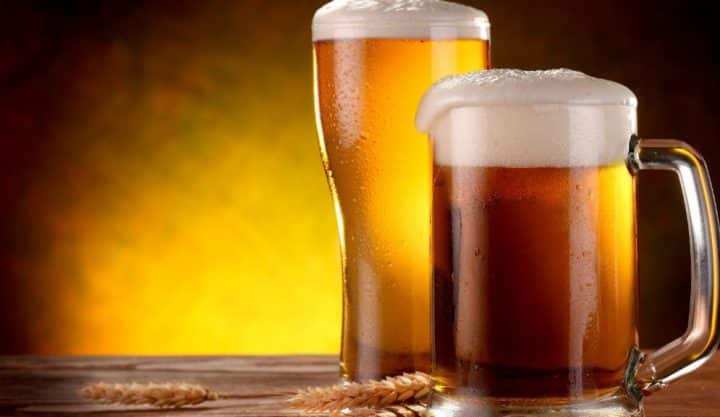Cheers to Nutritional Accountability for Beer Companies
Beer is about as American these days as apple pie and baseball. Gatherings and parties all over seem to have cans and/or bottles being held in their guests’ hands. Yet have you ever wondered why you look at nutrition panels on food and beverages to help you stay lean just to find adult beverages not having to play by the same rules? Well, you aren’t alone. The government/FDA has different regulations for food and spirits—but that soon might change for beer companies.
Disclaimer: This article is for informational purposes only and is not meant to treat or diagnose any condition. It is recommended that you speak with your doctor before starting any exercise program, changing your daily nutrition, or adding any supplements to your regimen.
Beer Companies Have Been Making Americans Fat For Decades

Some might be saying, “you shouldn’t be drinking alcohol anyway if you’re looking to get in better shape.” And you’re right. But there are plenty of people who work on bettering themselves daily, yet like to have a beverage every now and again. Look at Arnold Schwarzenegger… He was famously quoted for saying “milk is for babies, when you grow up you have to drink beer.” When you think about it, alcohol has been giving scrawny guys beer muscles for years! Which generally turns out disastrous most of the time for many of them who seem to gain some liquid courage.
The outcry for transparency in the food and beverage market has now come full circle and every packaged product you pick up at the grocery store has a nutrition label on it. This label gives us all a sense of how good (or bad) the product is. While many people still don’t understand what they should be looking for, consumers today are as intelligent as they have ever been when it comes to looking at labels and finding healthier choices. Now whether or not they choose to pick up or put down a product based on their findings is their own decision.
There are many people who know the difference between a healthy choice and an unhealthy choice and decide to purchase and consume the unhealthy choice anyway—and that’s their prerogative. But when it comes to alcohol, we have literally been left in the dark when it comes to nutritional transparency and accountability for beer companies.

Sure, we are all human and like to live a little. While we might not be cracking open a few bottles or cans of beer each night, it’s nice to gather among friends on a weekend, crack a few cold ones and enjoy ourselves. Some people go a little over the top and come Monday jump on the scale and wonder what the heck happened. Beer and alcohol are simply “empty calories” when you think about it. And more specifically, calories you never get to know the count of unless you do your own investigating—thanks Google.
These liquid calories add up fast if you aren’t paying attention. Would people be more likely to stop drinking if they knew how many calories they consumed? After realizing they just consumed over 600 calories in under an hour with plenty of daylight or moonlight left to have some fun with friends, would they slow down or stop? But again, they would have to pay attention to the label on the bottle. Maybe it would make them more conscious? Maybe they simply wouldn’t care even if they saw the calorie content? Who knows?
Either way, the Beer Institute which is made up of some of the largest beer companies in the United States (such as MillerCoors, Heineken, Anheuser-Busch) is looking to add transparency to their products—more specifically, include nutrition labels on their beer. They are looking to share how many calories are in each beer (can or bottle), the carbohydrate count, the alcohol by volume (ABV), along with other information directly on the product so you don’t need to hit up the internet to find out what’s in your favorite beer.

Consumers will also be able to check out the ingredient list as well which will either be located on box/carton, or by QR code on the actual bottle. This transparency will not be enforced immediately, rather, over the course of a 3-year period is when we should all see the changes made to the labels and packaging.
While you would imagine being transparent about their products (beer) would be detrimental to their business, many are commending these beer companies for their actions. Already six leading beer companies have agreed to adhere to the standards that are being pushed by the Beer Institute. These six beer companies make up around 80% of all beer sold here in the United States.
Some beer companies have made public statements that they are looking to comply with the changes but are unsure exactly where they will disclose such information. Many believe those who don’t want to truly comply will simply put a statement on their packaging or cans/bottles that says if the consumer wants to learn about the ingredients and nutritional profile to visit their website. Unfortunately, many do not believe consumers will take the time to look up the information as compared to having it on the can/bottle itself.
Click here to continue reading…


*Disclosure: This article may contain affiliate links or ads, which means we earn a small commission at no extra cost to you if you make a purchase through these links. These commissions help support the operation and maintenance of our website, allowing us to continue producing free valuable content. Your support is genuinely appreciated, whether you choose to use our links or not. Thank you for being a part of our community and enjoying our content.
PLEASE CONSIDER SHARING THIS ON YOUR SOCIAL MEDIA TO HELP OTHERS LEARN MORE ABOUT THIS TOPIC.





